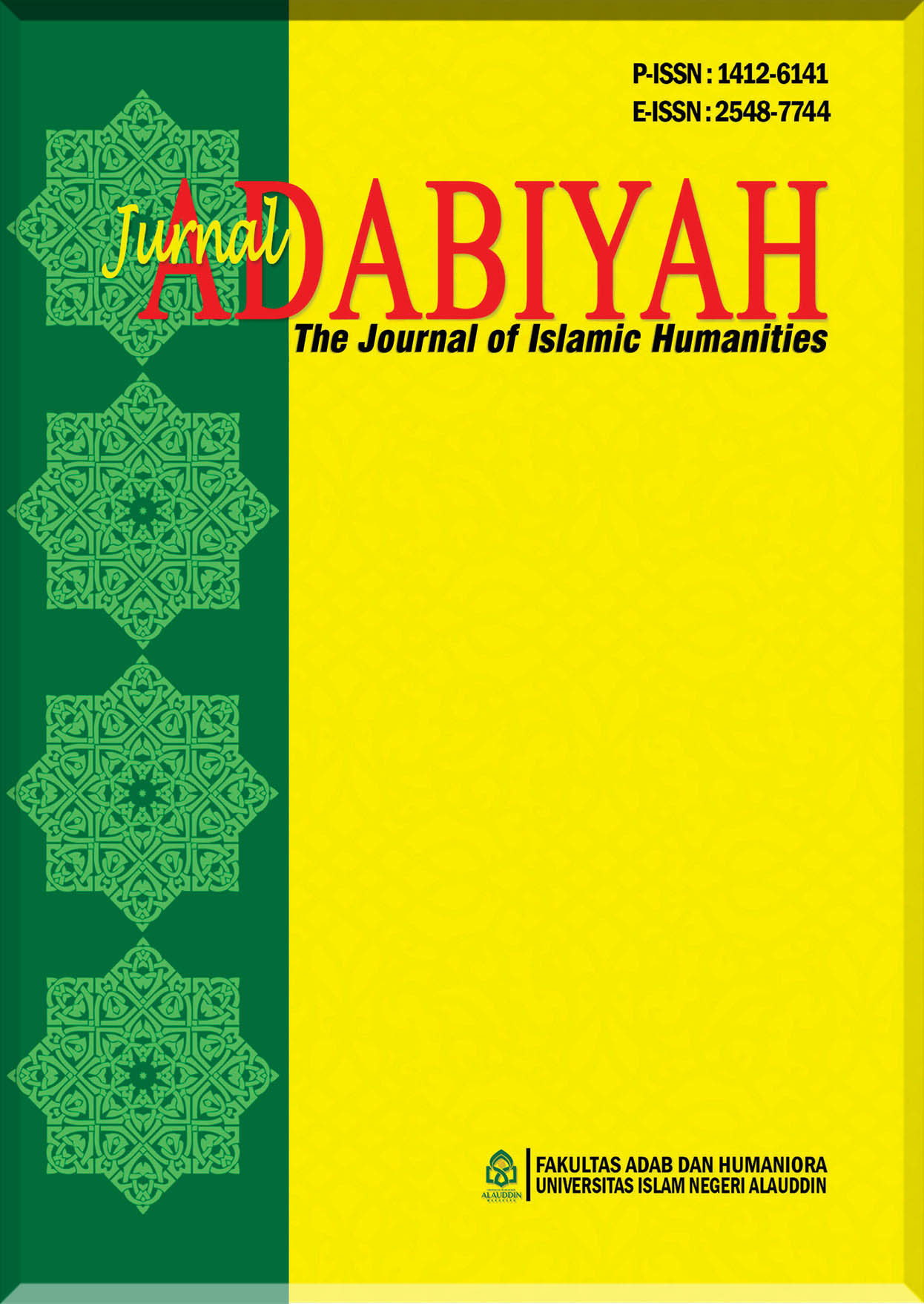Building Up Students’ Speaking Achivement Through Jigsaw Technique
Abstract
This research aimed to describe about whether or not the use of jigsaw technique significantly builds up the speaking achievement of participants of PIBA of UIN Alauddin Makassar and the use of jigsaw technique interesting to the participants of PIBA of UIN Alauddin Makassar. This research applied quasi experimental research and it employed purposive sampling technique. Two groups of the advance level of PIBA academic year 2012/ 2013 of UIN Alauddin Makassar. There are 30 participants from experimental group and 30 participants from control group. The data were collected using test and questionnaire. The data of students’ learning achievement on English speaking collected by using questionnaire. Those data were then analyzed descriptively and inferentially. The result of data analysis indicated that the jigsaw techniques built up significantly the students speaking achievement of advance levels after the treatment. Jigsaw technique effective in improving English speaking achievement of the students better than conventional activity as indicated by the T-Test value 24.403 and the P-Value (2 tailed). 000 which was not greater than 0.5 level of significance, and the students were interested in learning English speaking using Jigsaw technique which was indicated the mean score 85.97. It means that the students were classified very high interested students.Downloads
References
Anas Improving Reading Comprehension of the Third Year Accounting Department of SMKN Pangkep through Jigsaw Technique, UNM Thesis. 2008.
Bailey, Kathleen. M. and Savage, L. New Ways in Teaching Speaking. Cambridge: Cambridge University Press. 1994.
Brown, H. Douglas. Teaching by Principle: An Interactive Approach to Language Pedagogy. New York: Longman. 2001.
Clark, Herbert H and Clark, Eve V. Psychology and Language: An Introduction to Psycholinguistics. USA: Haircourt Brace Javanovich, Inc. 1977.
Gay, R.I., Educational Research: Comprehension for Analysis and Application (Second Edition), New York: Merril Published Company. 2006.
Gibbs, G. Improving the Quality of Student Learning, Technical and Education Serv. Ltd. 1992.
Harmer, Jeremy. The Practice of English Language Teaching. New York: Longman Inc. 1990.
Heaton, J.B. Writing English Language Test. USA. Longman Inc. 1989.
Hornby. A.S. Oxford Advance: Learners’ Dictionary of Current E. Oxford: Oxford Uni Press. 1987.
Ishak. Improving Students’ Speaking Skill through Cooperative Learning of the Second Semester of STKIP Muhammadiyah Bone. UNM Thesis. 2006.
Lahidi, Implementing Jigsaw Technique to Improve the English Learning Interaction at SMA Negeri 01. Bau Bau. UNM Thesis. 2008.
Lie, A. Jigsaw, A Copperative Learning for EFL Students Cross Currents. 1992.
Mahmud, Murni. Politeness in Bugis: A Study in Linguistics Antrhopology. Unpublised Thesis. Makassar: PPs UNM. 2010.
Nunan, David, Language Teaching Methodology, A Text for Teacher, New York: Practice Hell. 1998.
Richard, J.C. and Renandya, W.A. Methodology in Language Teaching: An Anthology of Current Practice. United Kingdom: Cambridge University Press. 2002.
Richard and Rodgers. Techniques and Methods in Language Teaching. Cambridge University Press. 2001.
COPYRIGHT AND LICENSE STATEMENT
COPYRIGHT
Jurnal Adabiyah is published under the terms of the Creative Commons Attribution license. Authors hold the copyright and retain publishing rights without restriction to their work. Users may read, download, copy, distribute, and print the work in any medium, provided the original work is properly cited.
LICENSE TO PUBLISH
1. License
The use of the article will be governed by the Creative Commons Attribution license as currently displayed on http://creativecommons.org/licenses/by/4.0.
2. Author’s Warranties
The author warrants that the article is original, written by stated author/s, has not been published before, contains no unlawful statements, does not infringe the rights of others, is subject to copyright that is vested exclusively in the author and free of any third party rights, and that any necessary written permissions to quote from other sources have been obtained by the author(s).
3. User Rights
Under the Creative Commons Attribution license, the users are free to download, reuse, reprint, modify, distribute and/or copy the content for any purpose, even commercially, as long as the original authors and source are cited. No permission is required from the authors or the publishers.
4. Co-Authorship
If the article was prepared jointly with other authors, the corresponding author warrants that he/she has been authorized by all co-authors, and agrees to inform his/her co-authors of the terms of this statement.
5. Miscellaneous
Jurnal Adabiyah may conform the article to a style of punctuation, spelling, capitalization, and usage that it deems appropriate. The author acknowledges that the article may be published so that it will be publicly accessible and such access will be free of charge for the readers.

